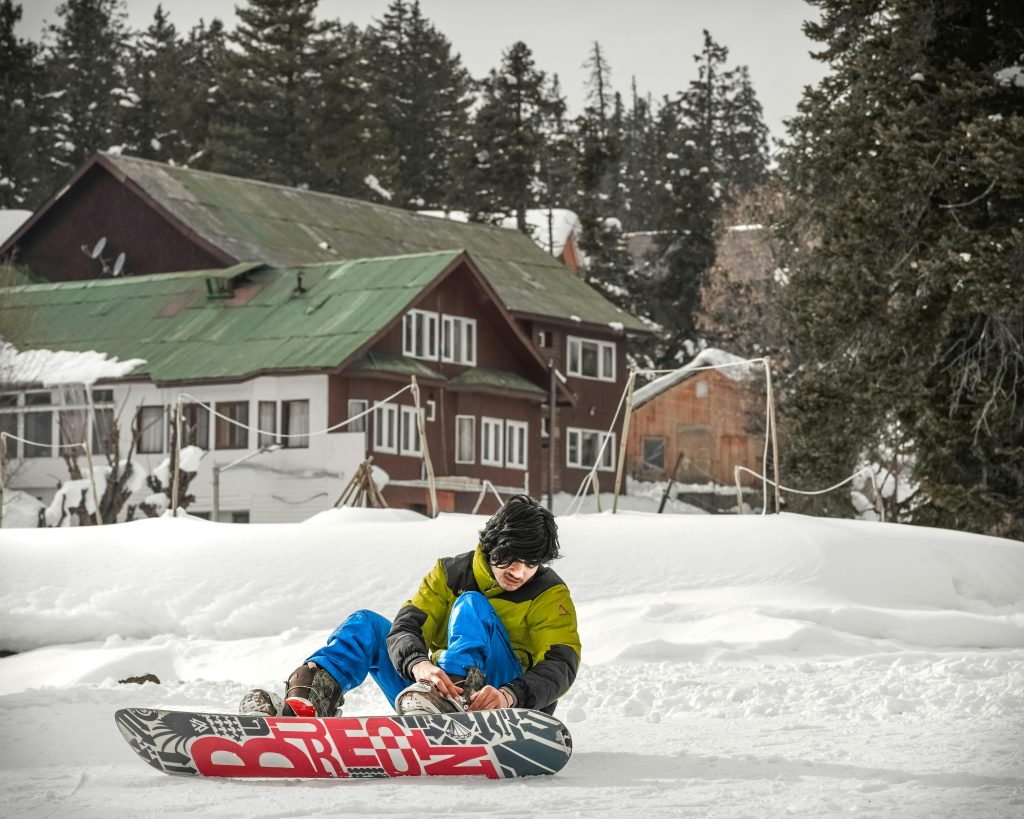Just bought new snowboard boots and now your feet feel like they’re in a vice grip? Totally normal. Brand-new boots always feel stiff and snug at first — but not all discomfort is created equal.
This guide breaks down what to expect, how long it takes to break in boots, what pain is “normal,” and when you should be worried. I’ll also show you a few tricks to speed things up so your boots stop punishing you asap.
TL;DR – Boot Break-In Basics
- New boots feel tight and stiff — that’s expected.
- Most break in after 5–10 riding days (less if they’re soft or heat-molded).
- Minor pressure points and toe tightness are normal early on.
- Pain, numbness, curled toes, or serious heel lift? Not normal. Fix it.
- Wear them at home, do short rides, or heat-mold them to speed things up.
Why New Boots Feel So Damn Tight
Snowboard boots are built stiff out of the box — especially the outer shell. But the liner (the cushy bit inside) is where most of the break-in magic happens. Once that packs out and molds to your feet, comfort kicks in.
Heat-Moldable vs. Traditional Liners
- Heat-moldable liners: Can be custom-shaped in a shop (or at home if you’re careful). Break in faster.
- Standard liners: Break in with body heat and time. Slower, but they’ll get there.
Boot Flex Affects Break-In Time
- Soft boots: 3–5 days
- Medium: 5–8 days
- Stiff: 8–10+ days
Ride more? They break in faster. Ride once a month? You’ll be stiff for longer.
What’s Normal Discomfort?
- Tight toes and midfoot: Yep, totally normal at first.
- Some pressure points: As long as it fades with use, it’s all good.
- Stiff ankles or calves: Expected — the boots will flex out.
- Minor heel lift: Should get better as the liner packs out.
What’s NOT Normal?
- Toes curling under or crushing pain: Too small. Swap sizes.
- Numb feet or pins and needles: Your boots are too tight or the lacing’s off.
- Blisters or hot spots that don’t fade: Might need new insoles or heat molding.
- Constant heel lift: You’ll never feel locked in. Time to fix that fit.
How To Break In Snowboard Boots Faster
- Heat mold them: Either at a shop or DIY if your liners allow it. Game changer.
- Wear them at home: Walk around, do stairs, flex your ankles. Looks weird. Works.
- Start with short rides: 1–2 hours instead of a full day. Ease into it.
- Don’t over-tighten: Loosen laces a bit while riding. Cranked tight = bad circulation.
- Use thin snowboard socks: Ditch the thick wool ones. Less bulk = better fit.
Still Uncomfortable? Time To Adjust
- Heel still lifting? Try J-bars or a heel hold kit.
- Liners packed out? Add a second footbed or insole.
- Weird pressure spots? Reheat mold or add boot-fitting foam.
- Ankle support gone? Try adjusting your binding forward lean or boot lacing zones.
When To Say Goodbye To Your Boots
- More than 80–100 riding days? That’s retirement age for most boots.
- Cracks in the shell or floppiness when flexing? Donezo.
- Outsoles worn flat? No grip = no fun walking to the lift.
- Liners totally dead? If they feel like slippers, it’s time.
Quick Tips for Wide Feet (or Just Big Ones)
- Heat-mold immediately — it’ll save you from pain later.
- Wear them at home first and keep laces slightly loose to start.
- Don’t overtighten speed-lace or BOA systems early on.
Final Tips – Breaking In Doesn’t Mean Suffering
- Your boots should feel snug, not painful. A little tight is good. Crushing your toes is not.
- If it hurts more after riding — something’s wrong. Fix the fit or return them.
- Heat molding = your best friend. Especially if your feet are fussy.
- Stock insoles suck. If you’re still uncomfortable, try something like Remind or Sidas.
We’ve got a full breakdown of custom vs. stock insoles here if you want to dive deeper and fix your foot pain for good.
Good boots should feel like a firm handshake — not a death grip. Give it a few rides, break them in properly, and you’ll be set for seasons to come.


